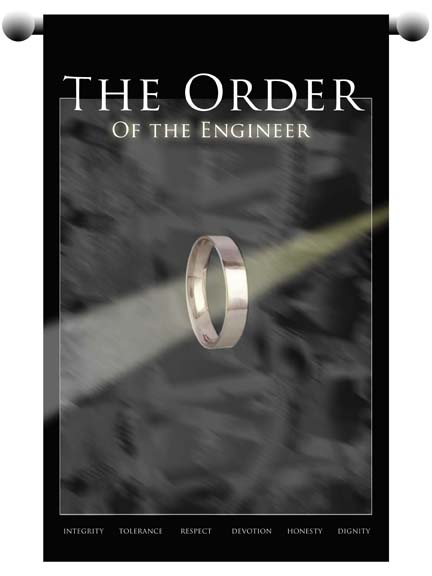Our History
 The Order of the Engineer was initiated in the United States to foster a spirit of pride and responsibility in the engineering profession, to bridge the gap between training and experience, and to present to the public a visible symbol identifying the engineer.
The Order of the Engineer was initiated in the United States to foster a spirit of pride and responsibility in the engineering profession, to bridge the gap between training and experience, and to present to the public a visible symbol identifying the engineer.
The first ceremony was held on June 4, 1970 at Cleveland State University. Since then, similar ceremonies have been held across the United States at which graduate and registered engineers are invited to accept the Obligation of the Engineer and a stainless steel ring. The ceremonies are conducted by Links (local sections) of the Order.
The Order is not a membership organization; there are never any meetings to attend or dues to pay. Instead, the Order fosters a unity of purpose and the honoring of one’s pledge lifelong.
The Obligation is a creed similar to the oath attributed to Hippocrates (460-377 B.C.) that is generally taken by medical graduates and which sets forth an ethical code. The Obligation likewise, contains parts of the Canon of Ethics of major engineering societies. Initiates, as they accept it voluntarily, pledge to uphold the standards and dignity of the engineering profession and to serve humanity by making the best use of Earth’s precious wealth.
The Obligation of the Order of the Engineer is similar to the Canadian “Ritual of the Calling of an Engineer” initiated there in 1926. It uses a wrought iron ring, conducts a secret ceremony, and administers an oath authorized by Rudyard Kipling. The extension of the Ritual outside Canada was prevented by copyright and other conflicting factors. The basic premise, however, was adapted for the creation of the Order of the Engineer in the United States in 1970.